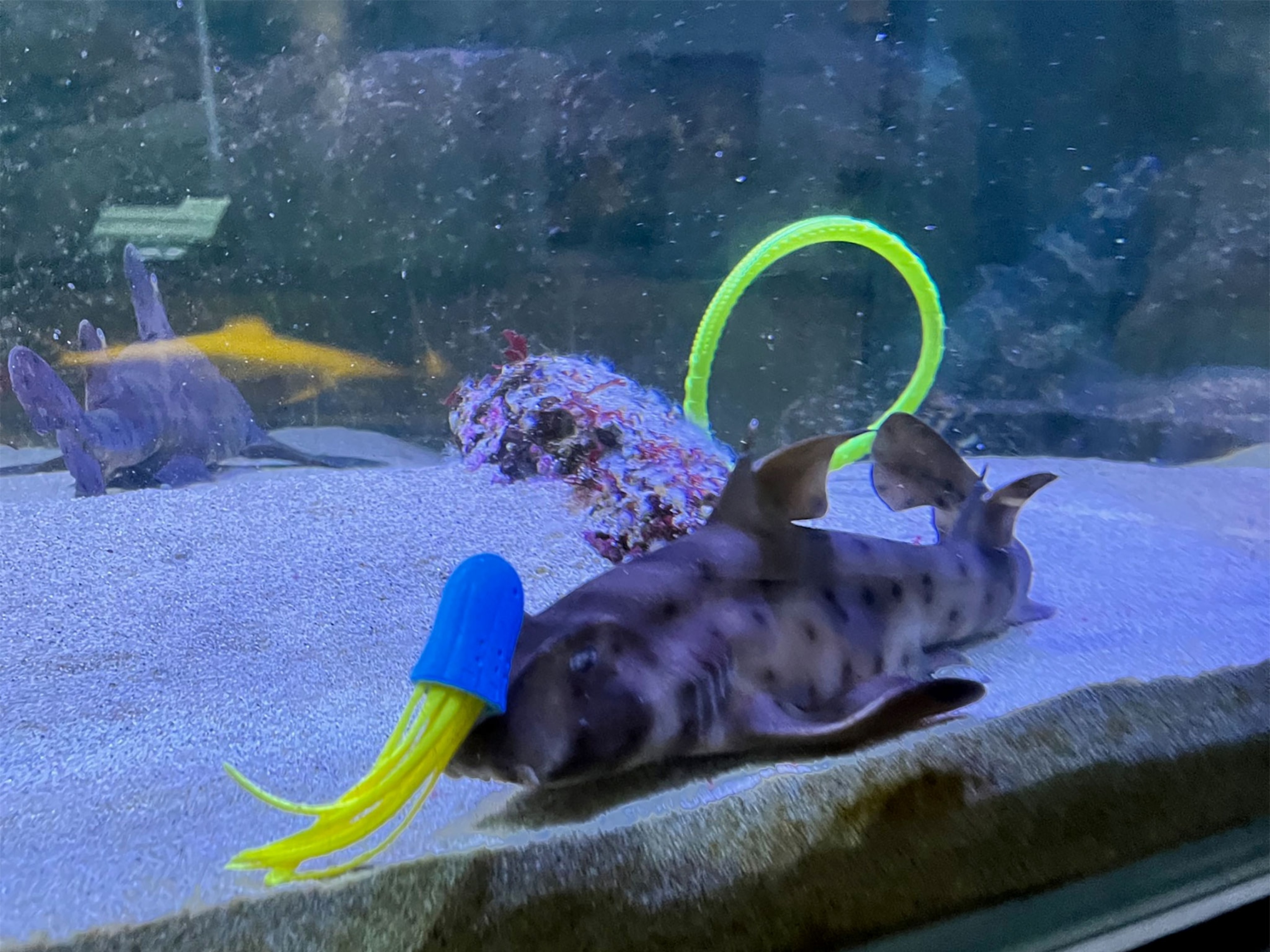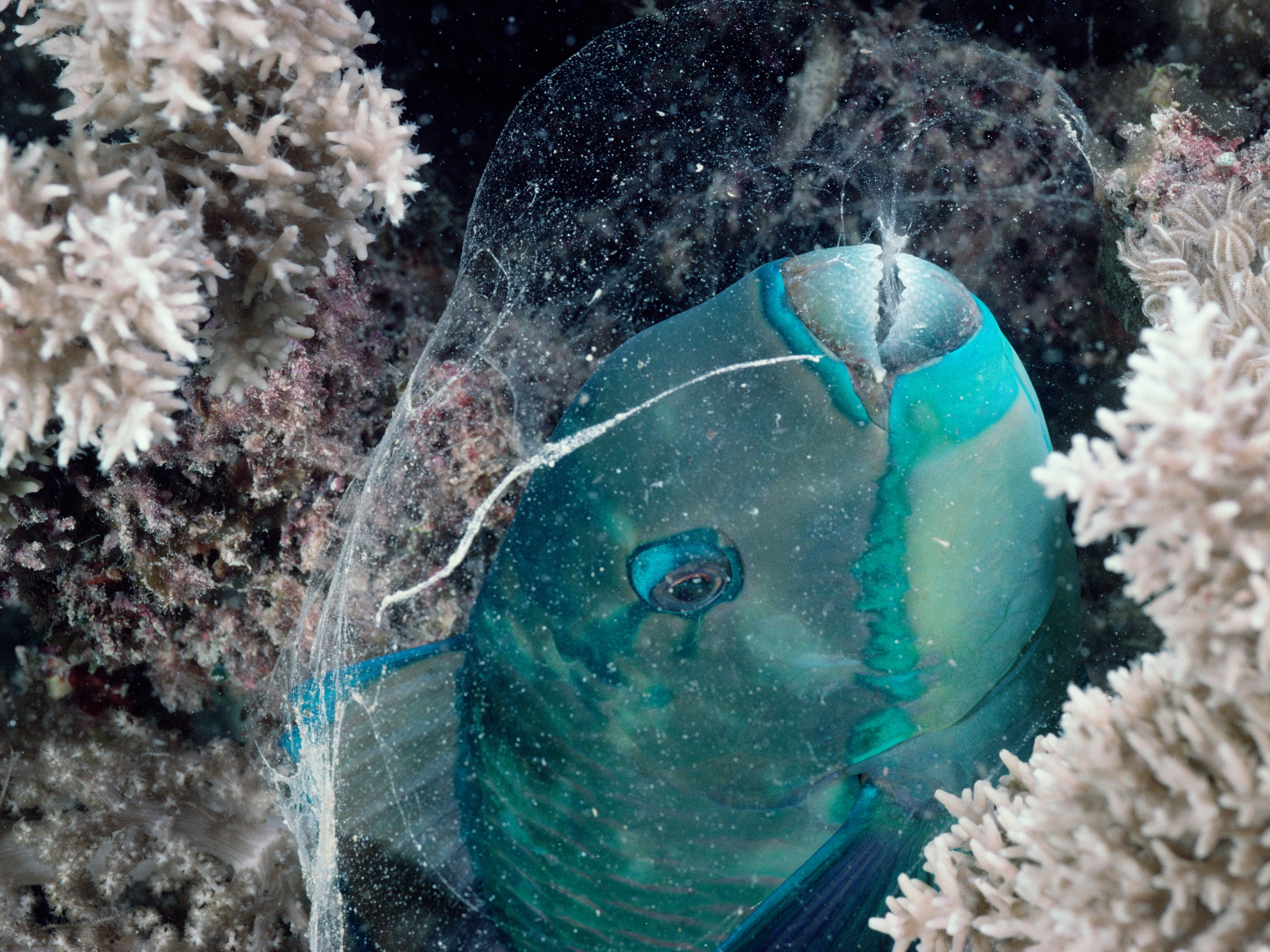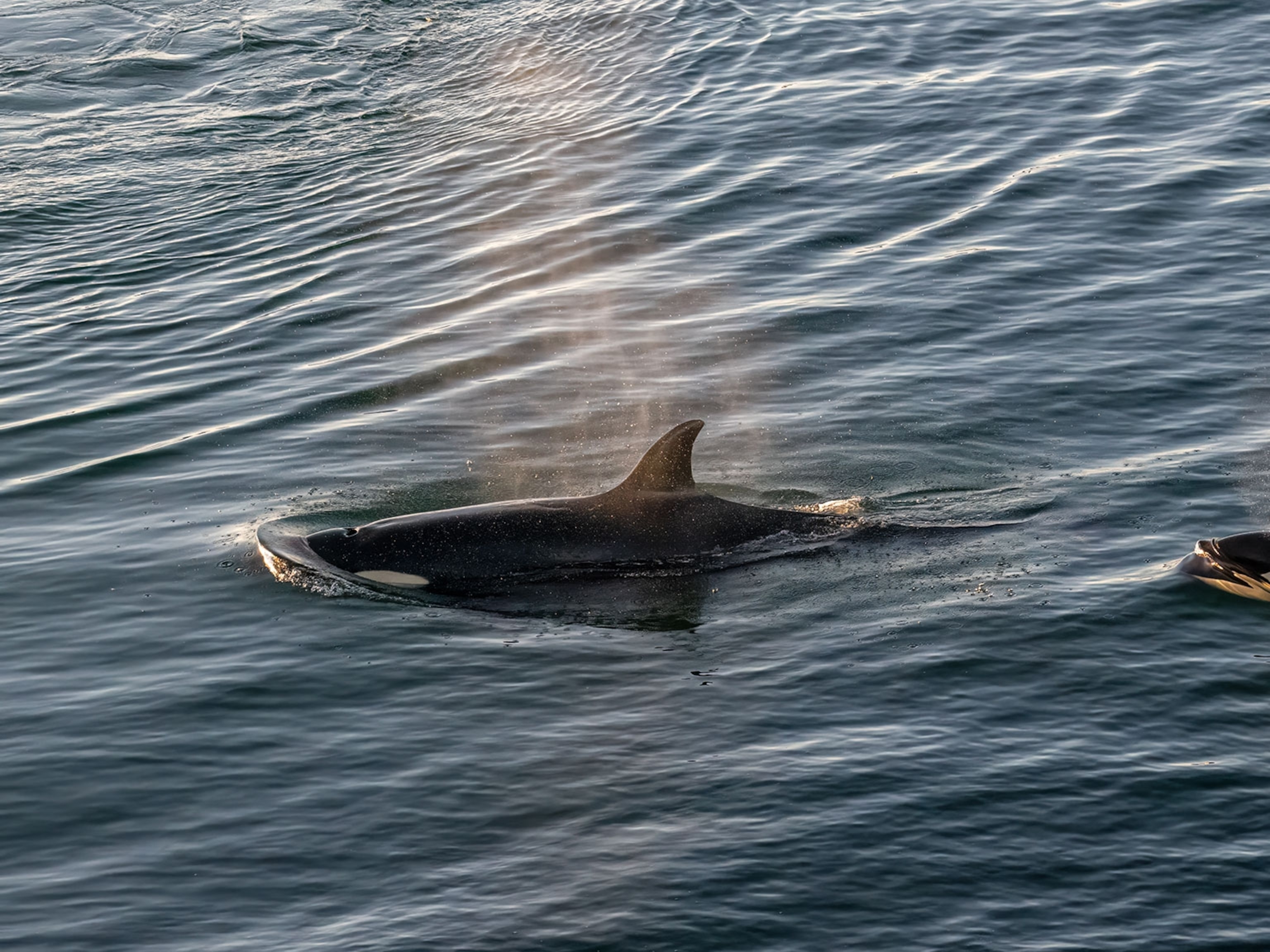
Slow Sharks Sneak Up on Sleeping Seals (and Eat Them)?
But there's no proof for sleeping-seal theory, expert says.
According to a new study, the world's slowest swimming shark may have evolved a slick move: Sneaking up on snoozing seals.
Though the species eat mostly fish, Greenland sharks in the far north have been found with seal parts in their stomachs.
The remains are "often fresh and free from carnivorous invertebrates such as brittle stars and amphipods, which made us believe that sharks can eat living seals," study leader Yuuki Watanabe said by email.
Scientists recently tagged the sharks to track their movements around Svalbard, a group of islands in the Norwegian Arctic. The results revealed that the sharks' top speed was half that of most seal species.
"Although this species is often described as 'sluggish,' it was a surprise to us that a three-meter [ten-foot] shark moves at the speed of a crawling baby," said Watanabe, a marine biologist at Tokyo's National Institute of Polar Research. (See shark pictures.)
The sharks' lethargic pace led Watanabe to propose the idea that seals could get caught napping. It's thought that Arctic seals sleep in water, instead of on sea ice, to avoid polar bears.
Personal experience also convinced Watanabe that seals could sleep soundly enough that Greenland sharks could take the mammals by surprise. He described a time he saw a seal floating in Arctic waters and thought it was dead.
"We actually touched it—then it suddenly started moving and dove down," he said.
(Also see "Pictures: Strange Sea Species Found Off Greenland.")
Slow Sharks' Hunting Still a Mystery
Gregory Skomal, a marine biologist from the Massachusetts Division of Marine Fisheries, has previously tracked Greenland sharks using acoustic tags. In an earlier study, Skomal suggested that Greenland sharks use camouflage and slow speed to ambush seals.
"Like in this paper, people have put forward great hypotheses, but I think the mystery still remains," Skomal said.
"No one has been able to definitively prove how these animals are hunting seals."
Watanabe's suggestion that the lack of invertebrates on the seal parts inside the sharks doesn't rule out scavenging, which can be a very slow process, he added.
"I imagine that these bugs would be able to evacuate the dead seal quickly if a big shark has opened its maw and started tearing into it," he said. (See pictures: "Shark Swallows Another Shark Whole.")
To further investigate the sleeping-seal hypothesis, study leader Watanabe and colleagues plan to mount cameras on the Greenland sharks.
The sleeping-seal study, supported by the
, was published June 8 in the Journal of Experimental Marine Biology and Ecology.





